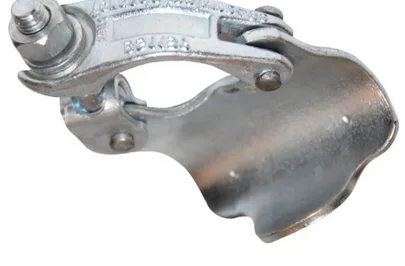Scaffolding is an essential part of construction and maintenance projects, providing workers with safe and stable platforms at various heights. Among the many components that make up scaffolding systems, scaffolding clips play a critical role in securing different parts together. In this article, A Complete Guide to Scaffolding Clips: Types, Uses, and Safety Tips, we will explore the different types of scaffolding clips, their primary uses, and essential safety tips to ensure secure and efficient scaffolding setups.
What Are Scaffolding Clips?
Scaffolding clips are fastening devices used to join scaffolding tubes or components. They provide the necessary strength and stability by holding the framework firmly in place. Without proper clips, the scaffolding structure could become unstable, leading to dangerous working conditions.
Types of Scaffolding Clips
Understanding the various types of scaffolding clips is crucial for selecting the right one for your project. Here are the most common types:
1. Right Angle Clips (Fixed Couplers)
Right angle clips, also known as fixed couplers, are used to join two scaffolding tubes at a 90-degree angle. They provide strong and rigid connections, typically used for vertical and horizontal tube junctions.
2. Swivel Clips (Swivel Couplers)
Swivel clips allow two tubes to be joined at any angle, providing flexibility in scaffolding assembly. They are especially useful for creating complex scaffolding shapes or when tubes need to be connected at irregular angles.
3. Sleeve Clips (Putlog Couplers)
Sleeve clips connect a scaffolding tube to a fixed point, such as a building or support structure. They are often used to support working platforms or to anchor the scaffolding frame.
4. Joiner Clips (Tube to Tube Couplers)
These clips join two tubes end-to-end, extending the length of the scaffolding structure. Joiner clips are essential when longer scaffolding is required but only shorter tubes are available.
Uses of Scaffolding Clips
Scaffolding clips serve several vital functions in construction and maintenance work:
- Structural Integrity: They ensure the scaffolding remains stable under load.
- Flexibility: Allowing various configurations to suit different job sites.
- Safety: Minimizing the risk of tube slippage or collapse.
- Ease of Assembly and Disassembly: Enabling quick setup and removal without the need for welding or permanent fixing.
Safety Tips When Using Scaffolding Clips
Proper use of scaffolding clips is essential for ensuring worker safety. Here are some important safety tips to keep in mind:
1. Use the Right Clip for the Job
Choosing the correct type of clip for the specific connection point ensures maximum strength and stability.
2. Inspect Clips Before Use
Regularly check clips for damage, corrosion, or wear. Replace any compromised clips immediately.
3. Tighten Clips Securely
Clips should be tightened to the manufacturer’s recommended torque to avoid loosening during use.
4. Avoid Mixing Materials
Use clips and tubes made from compatible materials to prevent corrosion and weakening.
5. Follow Manufacturer Guidelines
Always adhere to manufacturer instructions and industry safety standards for installation.
Conclusion
In summary, A Complete Guide to Scaffolding Clips: Types, Uses, and Safety Tips highlights the importance of choosing the right scaffolding clips and using them correctly to maintain a safe and efficient work environment. Whether it’s right angle clips, swivel clips, or sleeve clips, each type serves a unique purpose that contributes to the overall strength and flexibility of scaffolding structures. By following the outlined safety tips, workers and supervisors can ensure the scaffolding remains reliable and secure throughout the duration of the project.


